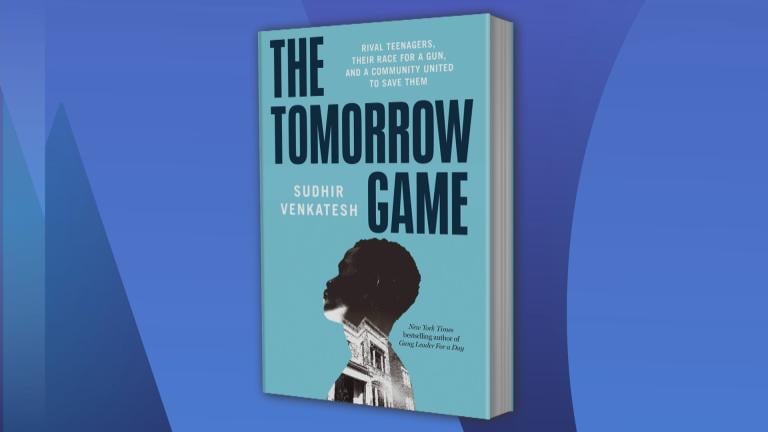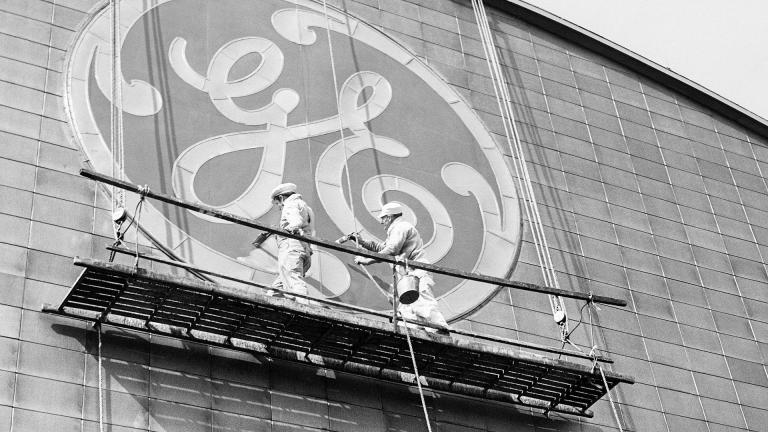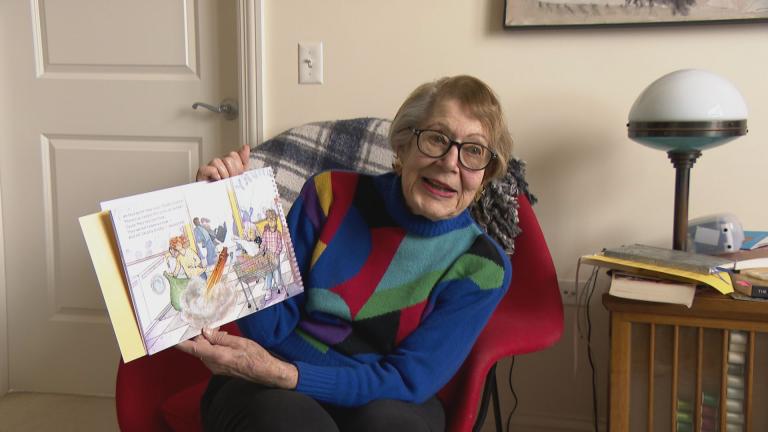What do an educator in Stockholm, a heart surgeon in India and an artist in Philadelphia have in common? They’re each working to create change in their communities; they took the first step without a grand plan or a far-reaching vision; and they’re profiled by a Chicago author in her new book “Dig Where You Are: How One Person’s Effort Can Save a Life, Empower a Community, and Create Meaningful Change in the World.”
For more than a decade, Nan Alexander Doyal ran an organization called The International Forum that created hands-on learning experiences around the world for corporate leaders. The Forum introduced the executives to people “doing really remarkable things that have stumped governments and large aid organizations for decades,” Doyal said. “They were great examples of leadership. They’d been able to do extraordinary things with limited resources … But the more I got to know them, I really personally wanted to know more about why they had done what they had and how they had been able to accomplish what they had.”
In 2008, Doyal left her job to spend time with seven people she’d met over the years, including an educator outside Stockholm who revitalized a school and helped disparate groups of immigrant children learn from one another, an artist in Philadelphia working with survivors of genocide, a psychologist and criminologist in San Francisco who lives alongside people as they rehabilitate from drug addiction and criminal behavior, and an economist by training who works to stop the spread of HIV/AIDS and to revitalize rural Thai areas through small business.
The book’s title comes from a teacher at the school in Sweden who described her philosophy of creating positive change to Doyal: “Something said to me: ‘dig where you are.’ And in that moment I understood that if you want to do something important for the world, you do not need to look far, you are already there – you just have to start.”
Doyal says the simplicity of that mindset – look close to home, think about the causes that already matter to you, and just get to work without fear that you don’t have all the answers – is the common thread through the seven profiles in the book. So too is community.
“We have a tendency to think about heroes as people that operate alone. I think one of the messages that’s really important for us in our society today is the importance of community and the importance of working collectively with others around you to both learn about issues but also to find solutions,” Doyal said.
Working collectively is also a key aspect of competitive bicycle racing, which Doyal started at the age of 47. She’s described her mindset as breaking things down into pieces – approaching a race not as a 100-mile trek, but several 20-mile treks.
“It was about having a dream to get there, but never taking for granted the steps that were going to come along the way. And I had a lot of things that got in my way,” Doyal said. “As it relates back to this group [in the book], this was a really important message that all of them imparted which I now really believe and carry with me … there really isn’t a silver bullet solution for the problems we face or for anything you’re trying to accomplish.”
Doyal joins Chicago Tonight for a conversation about the book.
Below, an excerpt from “Dig Where You Are.”
![]()
The Inmate
MIMI SILBERT
“There isn’t a person around who feels a damn thing for a third generation gang member,” says Mimi Silbert. “Nobody happens to like them. But I happen to love them.”
Mimi is barely five feet tall, yet has the presence of a man twice her size. When she enters a room, everyone knows it. Though she is well into her seventies, she could pass for twenty years younger. Her eyes are bright blue, like semiprecious aquamarine; and they move quickly, missing nothing. Her thick brown mane of hair hangs loosely around her shoulders. She has never bothered to style it or cut it short the way another women her age might have. Those types of personal details don’t interest her.
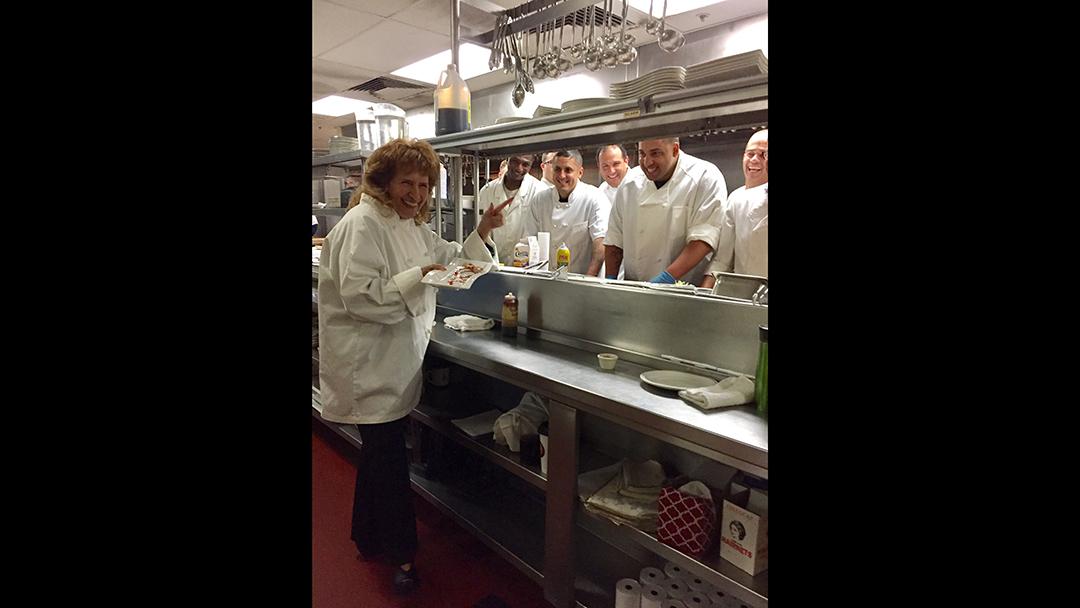 Mimi in the kitchen with residents. (Courtesy of Nan Alexander Doyal)
Mimi in the kitchen with residents. (Courtesy of Nan Alexander Doyal)
On the table in front of her is a lunch of hash browns, eggs, hollandaise sauce and Velveeta cheese. At her feet lies Maple the dog, a fluffy brown bundle of fur that looks more like a teddy bear than a canine. She watches as a young man in a shirt and tie approaches with a plate of vegetables.
“Put it here, Romero,” says Mimi gesturing to a spot near the corner of the room.
Romero chuckles as he bends his massive six-foot frame to set the dog’s lunch carefully on the tile floor.
The smell of sautéed vegetables and baked apple-cinnamon wafts into the private dining room while the bustling lunchtime crowd gains momentum in the main space outside. Today’s specials at the Delancey Street Restaurant include roasted garlic chicken and crab cakes served with rice and mango papaya salsa. The menu combines old recipes from Mimi’s childhood in an immigrant neighborhood outside Boston, with recent concoctions created by Delancey Street residents.
There are about four hundred people living in the larger complex adjoining this restaurant on San Francisco’s busy waterfront. Ninety percent are men. They are a cross section of society: white, black, Latino, tall, short, fat, thin. But they differ from their fellow citizens in one important regard. Most have come after serving multiple prison terms for violent crimes. The average number of felony convictions per resident is eighteen. A few are here after hitting rock bottom as junkies, living on the street and selling anything they can for money to buy drugs.
In spite of the profile of its inhabitants, however, Delancey Street does not employ a single guard or social worker, warden or counselor to keep things in line. The place is run entirely by its residents. There is only one among them who is neither drug addict nor criminal, and that is the tiny septuagenarian putting Velveeta on her hash browns.
Mimi calls Delancey Street a Residential Learning Community. Others who know about its success call it a world-class solution to criminal rehabilitation. The statistics bear this out: 85- 90% of those who make it through here never return to prison. Rather, they go on to lead meaningful lives as contributing members of society. As the recidivism rate in the U.S today is 70-80%, the success of this place is something many have tried to understand.
Before developing Delancey Street, Mimi was a professor at University of California- Berkeley, an expert in criminology and psychology with two PhDs. In 1971 she left her career to assist John Maher, a recovered drug addict and ex-con, in setting up a unique self-supporting rehabilitation center. Convicts and addicts would live together, get off drugs, finish high school, learn a skill or trade, and develop the self-esteem needed to live as productive members of society. Maher was convinced that this model would be more effective and sustainable than traditional rehab programs that incorporated outside experts to implement solutions created elsewhere.
Mimi was the mother of young twin boys at the time, and in addition to teaching at Berkeley, she was a consultant to police departments, prison systems and halfway houses. She had seen and experienced enough by then to be discouraged by the ineffectiveness of programs for convicts and addicts. Maher’s idea, however, intrigued her.
With only $1,000, the unlikely pair launched their effort for a handful of recovering addicts in a one-bedroom apartment. Within two years they had grown to one hundred residents and had purchased a run-down and neglected mansion, once the Russian Consulate in Pacific Heights. Though the neighbors objected when they moved in, the residents in the old Russian Consulate won them over by renovating the mansion and patrolling the neighborhood to keep criminals away. By 1984, there were over three hundred and fifty residents living together, behaving like a family and looking out for each other and the neighborhood.
The results of what they were doing were impressive and were making the case for a powerful alternative to prison and traditional drug rehabilitation programs. But all was not well. In 1985, John Maher returned to drugs and alcohol thereby breaking one of the cardinal rules agreed to by all residents who entered the place. The residents and extended family tried to help him, but to no avail. After crashing his car and endangering others, he was asked to leave Delancey Street. The rules established back then, still apply and they apply to all residents – including the founders. Maher died three years later.
With Maher gone, Mimi had to run Delancey Street on her own. After struggling with the city government and zoning authorities, she secured a long-term lease on the site where the current building stands at 600 Embarcadero. With no qualifications or experience, she then designed the complex and managed its construction and financing. With an eleventh hour loan from Bank of America for $10 million, she and the residents were able to complete the Delancey
Street triangle which today houses one hundred and seventy apartments for up to five hundred residents, a theatre, auditorium, dining hall, restaurant, retail locations, and meeting rooms. They repaid the loan in three and a half years with revenues generated from a number of small businesses they created and ran.
The project was one of the greatest challenges they faced as a community. That the residents and Mimi were neither qualified nor had the skills to build and finance such an undertaking didn’t stop them. They learned as they went, even when it meant taking down and rebuilding the same walls seven times because they were crooked.
“This population has been passive for so long and has no self-esteem. And you can’t give self-esteem to someone,” says Mimi. “Self-esteem comes from doing things, from taking a chance, putting yourself out there and making something happen.”
Mimi has had years to build her self-esteem, but she acknowledges that she started from a better place than most of the residents at Delancey Street. “I was brought up by people who were very loving. They didn’t like money much—which was probably good. It made it easier for me
to follow my gut, not the money. And I have always had a pretty strong gut.”
For over forty years Mimi’s gut has told her the same thing: If a person wants to get better they have to start by helping someone else.
Delancey Street Restaurant is one of a number of businesses that the residents run. It is a popular spot in San Francisco for good food at a good price. It is no secret that the chefs, bus boys, and waiters have rap sheets longer than the list of entrees. This fact is printed on the menu for everyone to see.
In the United States today, there are approximately 2.3 million incarcerated men and women. Only about 200,000 are in Federal prisons, while the majority are split fairly evenly between local jails and state prisons. In California the local jail population is close to 80,000. It is from this group that most of Delancey Street’s residents are drawn. A candidate who is awaiting sentencing may approach Delancey Street and ask to be considered for a spot in lieu of serving time in prison. If pre-selected he will be interviewed by several residents. He will be asked to talk about his life, what he has done and why he wants to come to Delancey Street. He will almost always lie and the residents know this. Through the interviews, enough will be learned to decide whether to invite him in. Once accepted, he will be given a letter to take to the judge at sentencing.
Romero, who is now the Maître D’ of Delancey Street Restaurant, came five years ago from jail. “I was in juvenile hall when I was fifteen,” he says. “When I turned eighteen, I was sent to jail. I wanted to go. It was what I thought I was going to do with my life. I had friends in prison and an older cousin, who I looked up to, who was doing a life sentence.”
After five separate trips to prison, Romero was arrested again. He had heard of Delancey Street as an alternative to serving time. Years earlier he had interviewed for a spot. He had been accepted, but decided against going. He wasn’t ready then to leave the people and life that he knew. This time, however, he was facing a twelve year sentence. He wondered if there was an alternative. When Delancey Street approached him again, he was ready to come.
Romero grew up in a community north of San Francisco. His parents were alcoholics who fought constantly and played no role in raising him. He had an aunt who might have been a better influence, but she lived over an hour away. Neighborhood gangs offered a sense of family
that Romero couldn’t find at home. They congregated in the park behind his house. His cousin already a member, always had a new weapon he wanted to show off.
Says Romero: “I just wanted to be accepted. By the time I was sixteen, I had done a number of shootings and stabbings and nothing went through my mind like I shouldn’t do this. You know I never had any kind of thoughts like that. I said, ‘I’ll do it.’ I was just lonely and angry growing up.”
His dark eyes don’t soften when he smiles. It is as if he is practicing facial expressions and hasn’t got all the pieces to work together yet. Still, were one to meet him on the street, he would appear as just another college student or young professional, not a convicted criminal with multiple felonies.
“You didn’t laugh once in the first two years,” Mimi says to Romero. Having finished her lunch, she motions for Romero to take a seat at the table next to her. “No one had ever seen you smile. You were just this tight ice cube violent thing.”
Romero nods. “Until the Elf Dinner,” he says.
“Yes, when you and everyone else walked behind me into the room shooting your legs up in the air singing Here comes Santa Claus.” Mimi starts singing the popular holiday song. After a minute Romero joins in. Maple stirs on the floor, catching Mimi’s attention. “Sorry baby,” Mimi says in a squeaky voice reserved for puppies. “We didn’t mean to wake you.”
Romero remembers that Mimi made him eat everything put in front of him at the Elf Dinner that year. He ate until, as he says, he was “food drunk.” Then he started to giggle. Then the giggle turned into a laugh. Then he couldn’t stop laughing.
“Then someone said: ‘That’s Romero!!! He’s laughing!’” Mimi says, her voice rising in excitement.
“Yeah. I kept looking at you and I couldn’t stop laughing,” says Romero.
“Sometimes it’s just about eating and laughing and forgetting who you are,” Mimi says. “And realizing you are a part of a community that is laughing at themselves. All of a sudden you break through; something happens and you look around and say I like all these people.”
“These are my people,” Romero says softly.
“When we started this place, we had first generation gangsters,” Mimi says. “You used to be able to reach them by saying things like: Your mother left wherever and crawled across the country and cleaned toilets so that you could become a fucking junkie and not give a shit about her, get seven people pregnant. But that’s not true now. Today they are third generation. They come in and their grandmothers are writing to them saying: Get out of there, someone took revenge on your cousin and we need you to take revenge on them and we need the money from your selling dope. This is the way they live. They have so developed an underclass reality (I have always called them an underclass) that has nothing whatsoever to do with anything else.”
Mimi says that when the politicians today talk about the divide between the people in our society they have no idea what the reality is. They are referring to money—who has it and who doesn’t. But that’s not the problem.
“It used to be that people who came here were in despair, but they knew what hope was.
Now they don’t even know what hope is. This is what they have been born into and what everyone else they know has been born into. At some point, however, some don’t want to go to prison for the rest of their lives. So they come here, but they have no idea what’s possible; and I don’t mean they have no idea that they might someday go to a museum and learn about art. I mean that they don’t understand that there will be a day when they won’t want to kill everybody that’s not in their gang,” she says.
After they’ve been here for a while, after they’ve experienced what it’s like to do a job and complete it or do something for someone else, things start to change.
Romero has hope now. He never cooked before coming here. He hadn’t even boiled an egg. Now he bakes breads and makes desserts. He says it makes him feel good to cook for people. In the beginning fellow residents taught him to be a bus boy. Then he graduated to pastry chef. Eventually he was promoted to the job he has now.
The average stay for a resident here is four years. “When I first got here I thought – do I stay? Do I want to do this?” Romero says. “I was so into gang life that I knew if I stayed here too long I wouldn’t be accepted back and then I can’t go anywhere. That was my biggest battle. I didn’t do much of anything. I just worked. I put my head down and just worked. It took me awhile; it took me a couple of years.”
“You have to stay here at least two years. That’s what the courts feel is right,” Mimi says. “But you’ll know when you’re done and that’s when you leave.” She smiles. “We do everything the opposite of prison. That’s why you ring the bell to get in that front door. And it’s open whenever you want to go out.”
Romero knows this. So what keeps him here?
In the over forty years Delancey Street has been in existence, only a small number of residents have left before they were ready. “But then a lot have come back,” says Mimi. “They went back to their parole officers or their girlfriends and said are you kidding me? and then they came back.”
They realize that they have changed, that their lives have changed and that they don’t want anything to do with who and how they used to live.
“But I don’t take everyone back who decides to leave early because I want to be known as a place that’s hard to get into. There are always a few who only make it three days, or a day. They either don’t like it, or don’t like the work.”
But for the rest, like Romero, there is something that keeps them here—whether it’s seeing others every day who are making it work, whether it’s because they feel connected to the group with whom they have to spend every waking hour, whether it’s because they like the food or the work, or because they have no other choice. Everyone has a reason.
Residents are assigned apartments based on their tenure and seniority. The new residents are grouped together in one part of the complex. They sleep in rooms of eight or nine and they go everywhere together. If one is slow in the morning and makes them all late for breakfast, they all get in trouble.
The emphasis here is on education and building skills to live productive lives as members of society. Most arrive illiterate. By the time they leave, they must have either a high school diploma or passed a high school equivalency exam. They must also learn at least three marketable skills from cooking to accounting to manual labor.
What changes your life is changing what you do not what you say you’re going to do, says Mimi. Traditional therapy helps you to understand what got you into trouble in the first place but it does not lead to a better life unless you act on it; and figuring out how to do that on your own is nearly impossible if you are a self-destructive personality. Residents at Delancey Street put what they learn into action every day. The term they use for that process is “Act as if.”
If you want to be a decent human being then Act as if you are one again and again. Even though you don’t care about anyone but yourself, because that is how you have survived until now, Act as if you do and eventually you will. If you want to be someone with a real job
someday, then put on a coat and tie, do your work day after day and eventually you will be that person.
In 2010, Delancey Street was shaken when Mimi was diagnosed with cancer. She underwent treatment and while in recovery she suffered two minor strokes. As if that were not enough, she hit her head and suffered a concussion that caused a temporary loss of memory.
“I couldn’t think of the names of a lot of people in Delancey Street. I thought, Oh my god I’ve known their stories since the beginning, now what will happen?” she says. “The first time I got up in front of the residents after my strokes I couldn’t talk very well. But I laughed and made jokes anyway. Then I reminded them about our principles. One of the residents said – ‘oh I thought Act as if meant to act as if you are busy when the older residents come along.’ And I said, ‘You’ve got it absolutely wrong. Let me explain. For example– this entire speech I am giving you is one big Act as if. Really I’d rather be in my bed with my box of white chocolates crying. But that won’t help me; it won’t help you and won’t help the world. So even though this is the worst time for me and I feel horrible I am going to Act as if I love my life’.”
Today Mimi is back in almost full force. She tends to tire more easily at the end of the day and still forgets a few things—but then so do most people ten years younger than she.
From the sidewalk, the Delancey Street complex looks like luxury condominiums. The buildings are arranged around an immaculate courtyard behind a wrought iron gated entrance. The second and third floors are exclusively apartments, while the street level units are, for the most part, occupied by small businesses run by residents—an artist’s framing studio, an auto body shop, dog grooming, a print shop, and a cafe/bookstore.
The first business, a moving company, was created while still in Pacific Heights. Mimi got the idea when she watched a couple of residents help lift a neighbor’s grand piano. “If there was one thing that prison gives you, it’s big muscles,” she says. Delancey Street Movers has grown to become the largest moving company in Northern California.
Today the portfolio of enterprises also includes catering, furniture design, Christmas tree sales, transportations services for the elderly and people with disabilities, construction, marketing incentives, and a credit union.
In the center of the complex is a small pool, a community events room and a movie screening theatre which is also available for rent to outsiders. In one of the buildings is the kitchen and dining room, the Club Room for gatherings, and the Vatican Room where the more tenured residents meet to discuss the social wellbeing of their community.
Delancey Street is a private nonprofit organization. It receives no government funding. Seventy percent of its operating expenses are covered by the revenues from its many businesses. The remaining 30% of revenues come from private donations or donations in-kind.
Residents are responsible for running the daily operations of Delancey Street as well as training and teaching each other. A convicted thief manages the financial records. The irony is not lost on him when he explains that his daily duties now entail being trusted to manage money that is not his. Many who have had this job before him have gone on to professions in bookkeeping, accounting, and business management. The moving company is run by another convicted thief, who points out that today he is still taking things from homes; only now he is hired by the owner and is even paid to do so.
The complex is kept clean by the newer residents who sweep and mop the stone tiles daily. When you first get here, you are assigned the dirty jobs; and you do them all day long.
When you get good enough at sweeping and mopping, you are promoted to another job—but not before you teach what you’ve learned to someone else.
“We keep them busy so they don’t have time to think about how much they hate each other or how hard it is here,” explains the Head of Maintenance, who himself arrived at Delancey Street a couple of years ago.
There are two rules by which everyone must abide: no violence or threat of violence, and no drugs or alcohol. If you break either, you are out. You go back to prison if you’re a convicted criminal and back to the streets if you’re an addict.
There has been no violence at Delancey Street since it was founded, but there is a lot of anger: anger at society, anger at family members, anger at rival gangs, and anger at themselves. But anger is not necessarily bad. As Romero says about the candidates he interviews: “I look for a little anger in a person because it tells me he has energy, something that drives him, and so he’ll probably do well here. A meek or quiet person won’t do as well. But there can be too much anger. Sometimes we’re wrong about people.”
On more than one occasion, Mimi has questioned some of the decisions regarding new recruits. But she concedes that on the whole the residents are smarter at picking candidates than she. They know all the games and lies, she explains.
“Every day we go to jails to interview people who are waiting to go to prison,” she says. “I tell the residents to take ten people, and they pick the ten worst people they can find. I like to say we are just like Harvard. Except Harvard goes out of their way to pick the top 1% and we go out of our way to find the bottom 1%.”
Mimi says that in spite of the changes on the outside over the past four decades, Delancey Street has not changed how it does things on the inside. Experts and consultants have suggested
that as a world-class organization, it should expand what it is doing, replicate it, roll it out and scale it up. But Mimi will have none of it.
“I guess more people know us now than used to. But if you understand the world, you know that most of the time they raise you up so they can tear you down later,” she says. “No, we’re not world-class. We are the same assholes who have to keep getting it together, pooling our resources, learning decency, getting some power, and moving forward.”
She has never been interested in placing a priority on expanding the scope of what she does by increasing the number of residents she takes in. Her focus is not on numbers, but in facilitating real and sustainable transformation. She has, however, created smaller versions of Delancey Street San Francisco in Los Angeles, North Carolina, Santa Fe and New York.
Every person who leaves any of these locations and makes a new life is equipped—and usually eager—to help another do the same. “That is how you create scale,” Mimi says. “And it happens because when A helps B, A gets better, when B helps C, B gets better, C helps D and C gets better. Sure one person might have started something, but what really matters is that each is helping the other and making things better, and each one is teaching someone else what they have learned.”
When a resident feels that they have learned everything they can from Delancey Street, they make their case in front of a council of other residents. If their case is accepted, the transition process begins. Mimi knows this process is difficult so she tells them not to worry and not to rush it.
A resident can still live at Delancey Street while they settle into a new job, make new friends, start putting things together, and finding their own place. Then naturally they start to
separate, as any young family member does when they grow up and leave home. Once they keep a job for three to six months, they start what Mimi calls the “change of address” phase.
“Some who leave come back all the time for dinner. Some only come on holidays,” says Mimi. “Some belong to golf clubs now and don’t want anyone in the club to know they have a past, so we don’t see them again.”
Those who have been in the program keep in touch with each other on Facebook and through social media. Mimi is not a part of that dialogue. She is not terribly interested in technology as a medium for communication; she doesn’t even have an e-mail address. Also, she believes they should be left to begin their own lives away from her. It is enough for her to know that they are still looking out for each other after they leave here.
“When someone does something for someone else they feel good about themselves, it’s not when something is done for you,” she says. It is the same for those still inside Delancey Street as it is for those who have moved on. When someone feels good about themselves, builds self-esteem, much more is possible.
Mimi has given a lot of thought recently to who her successor may be. But she also knows the future of Delancey Street may not turn out the way she has planned. Someday it will be out of her hands. But if even one life is changed for the better because someone does something for someone else, it will be worth it.
Whatever the future, Mimi and Delancey Street have helped to transform hundreds of lives; and these transformed men and women have already gone on to help hundreds more.
Everyone who passes through Delancey Street learns the secret to changing a life: Each One Teaches One. It’s that simple and that complex. And it works.
Continue reading the full chapter.
Reprinted with the permission from Dig Where You Are, by Nan Alexander Doyal, 2017, Casper Press. Copyright 2017 by Nan Alexander Doyal.
Related stories:
 How 2012 Chicago Teachers Strike Changed Fight Over Public Education
How 2012 Chicago Teachers Strike Changed Fight Over Public Education
Jan. 5: A new book argues the teachers strike of 2012 did more than just force a contract. A look inside “A Fight for the Soul of Public Education.”
 ‘Getting Religion’ Reflects on 50 Years of Faith in America
‘Getting Religion’ Reflects on 50 Years of Faith in America
Dec. 27: Longtime religion reporter Kenneth Woodward tells the story of how American religion, culture and politics influenced each other in his latest book.
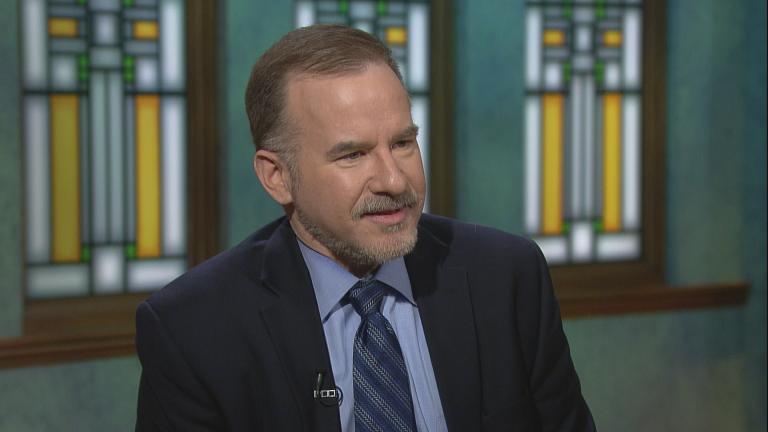 Neil Steinberg Shares Advice, Sobering Quotes on Addiction in New Book
Neil Steinberg Shares Advice, Sobering Quotes on Addiction in New Book
Dec. 21: The Chicago Sun-Times columnist muses on weathering the holidays without alcohol and his anthology on addiction, “Out of the Wreck I Rise: A Literary Companion to Recovery.”

